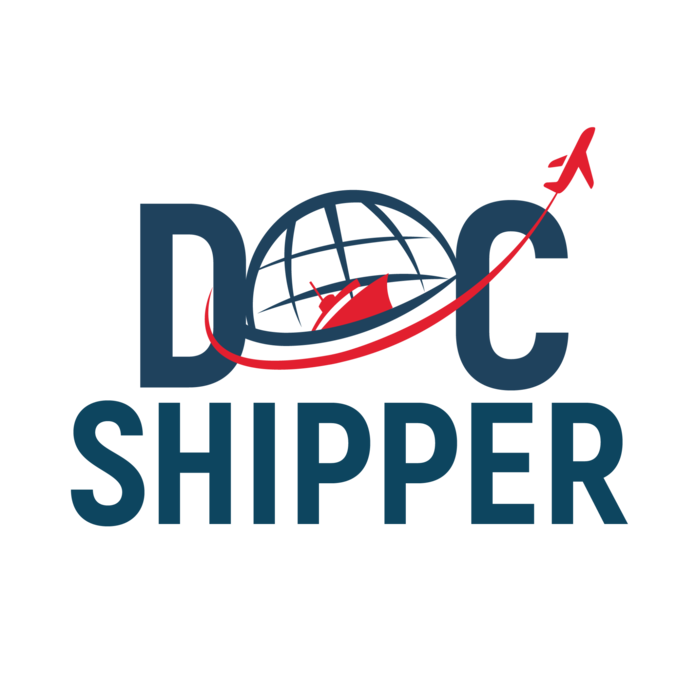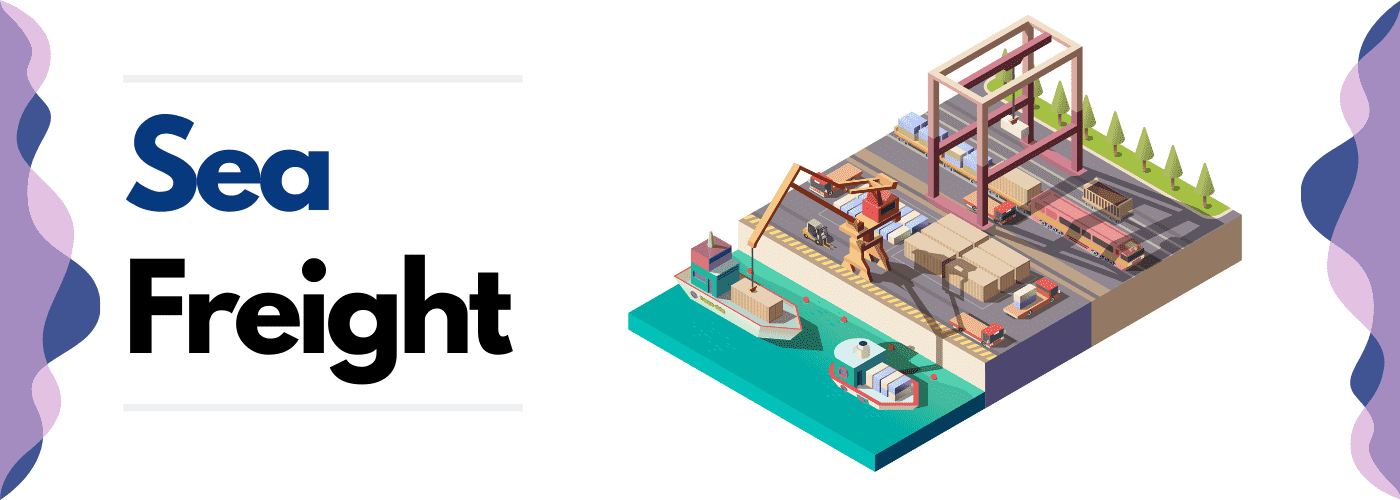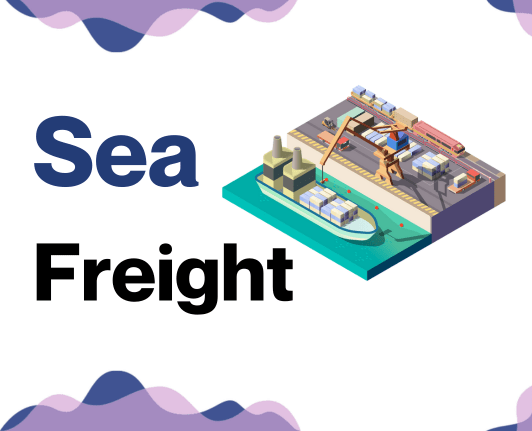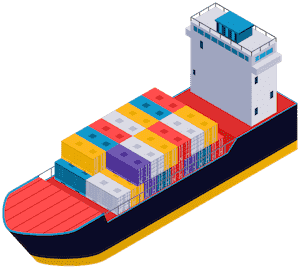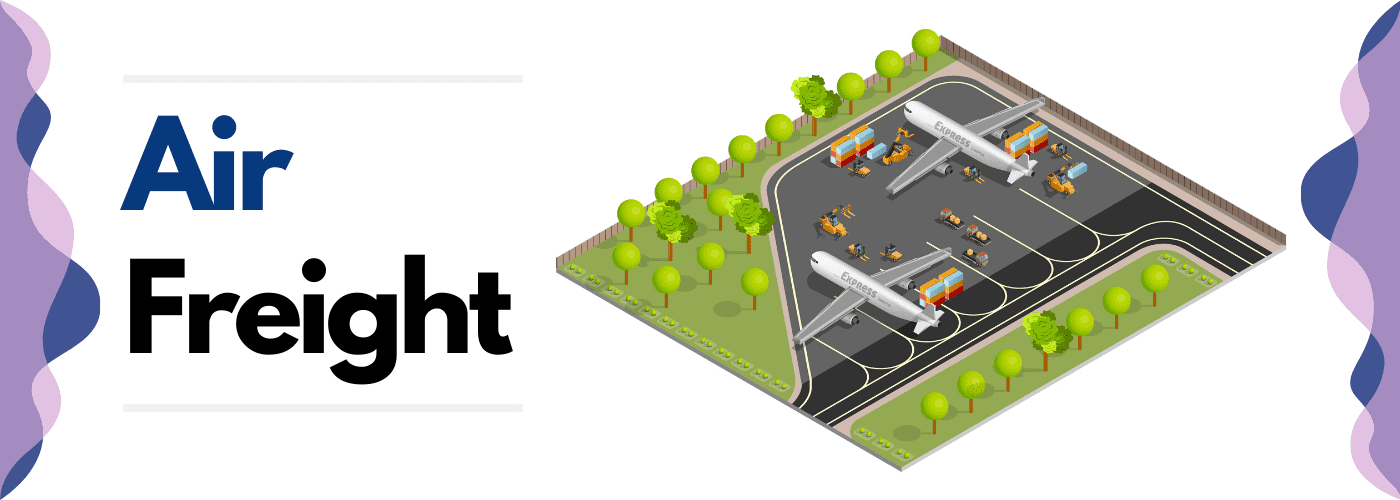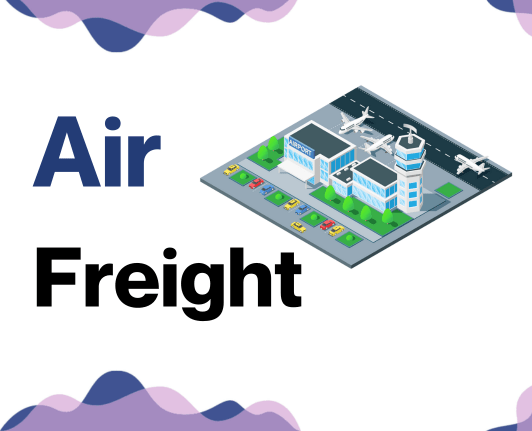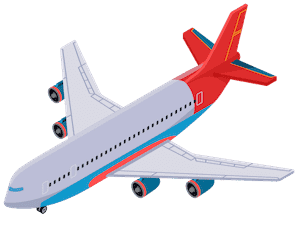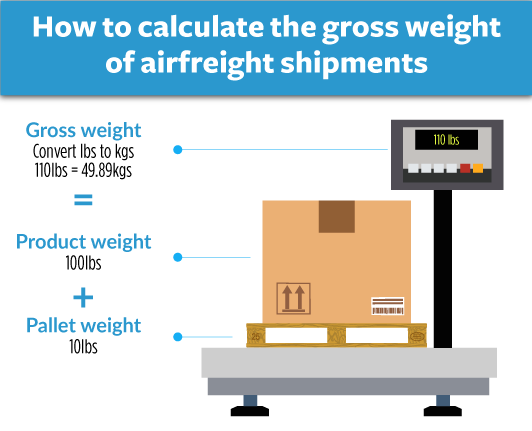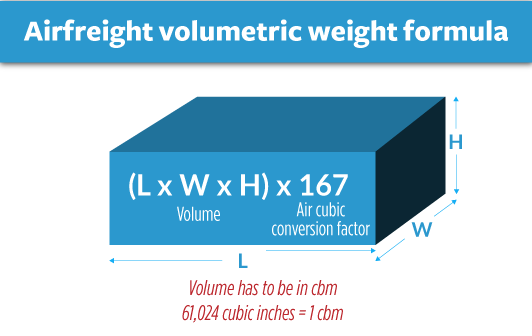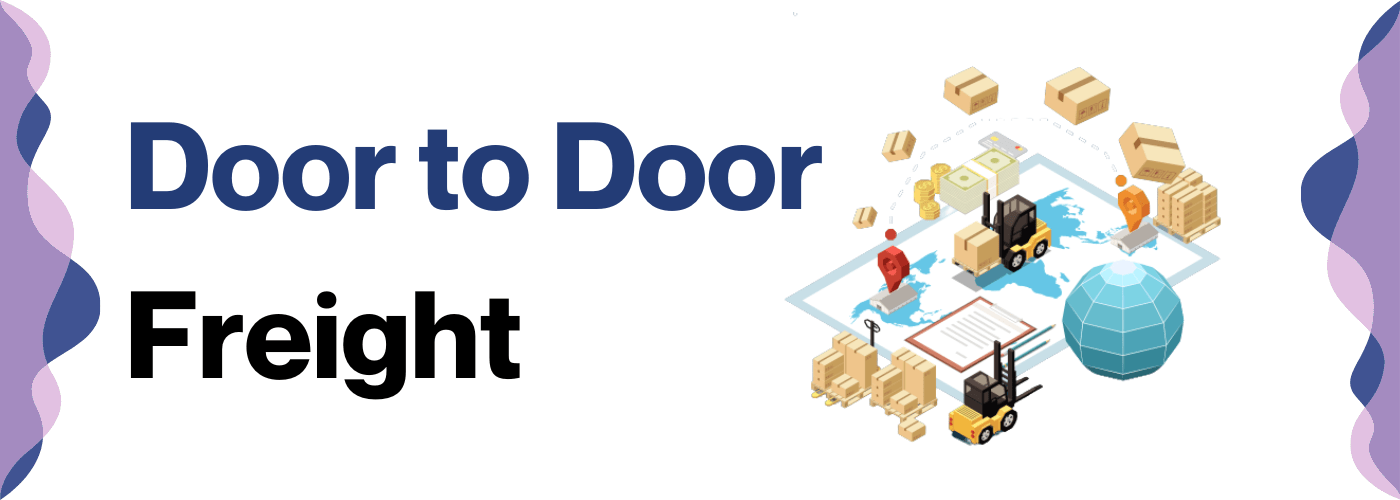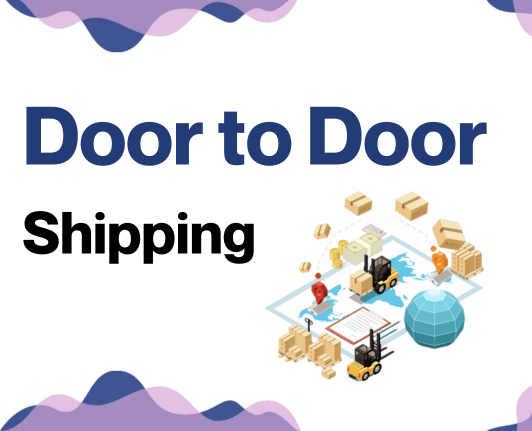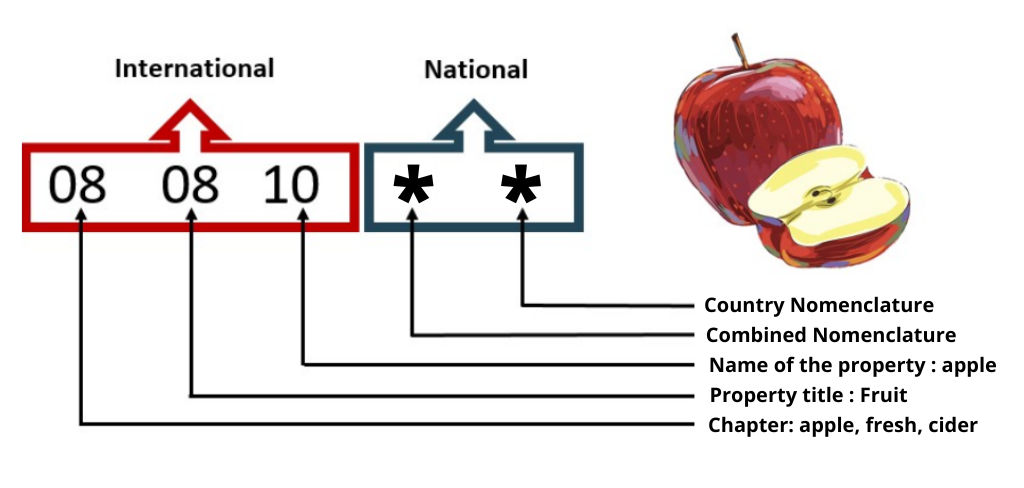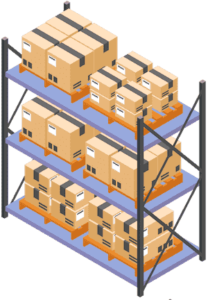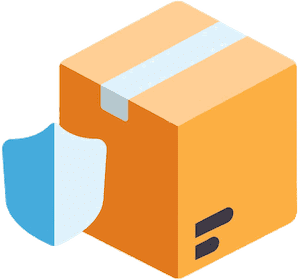Want to transport your goods from US to Pakistan, but can't tell your LCL from your FCL? Understanding freight rates, transit times, and the flurry of customs regulations can seem as challenging as deciphering a foreign language. This comprehensive destination guide was crafted to shed light on these worry areas and more. Learn about the diverse types of freight options – air, sea, road, or rail – and their relative advantages. Gain expertise in anticipating and managing customs clearance, duties, taxes, the labyrinth of administrative formalities, and receive strategic, actionable advice to tailor your business needs. If the process still feels overwhelming, let DocShipper handle it for you! With our experienced international freight forwarding team, we turn your logistics challenges into milestones of success for your business.
Table of Contents
ToggleWhich are the different modes of transportation between US and Pakistan?
Choosing the most efficient transport for your goods between the US and Pakistan requires a nuanced approach. This isn't a straightforward trip across the pond—it's a journey spanning continents and vast oceans. Imagine it as a game of connect-the-dots, where the dots are far apart and surrounded by various obstacles. Air freight has its merits with speedy delivery, but it’s pricier. On the other hand, ocean freight, acting like a sturdy, patient turtle over the expansive sea, offers cost-efficiency for large volume shipments. Your choice should align with your cargo's nature, urgency, and your budget convenience.
How can DocShipper help?
Facing complexities with your US-Pakistan shipping needs? Let DocShipper simplify it for you. Our expertise spans across customs, transport organization, and detailed administrative procedures. Trust us, get it sorted hassle-free. Got doubts? Our consultants are just a call away. Or want a free estimate in less than 24 hours? Contact us now!
DocShipper Tip: Sea freight might be the best solution for you if:
- You are shipping large volumes or bulky items, as sea freight offers the most space at a cost-effective rate.
- Your cargo doesn't have an urgent deadline, as sea freight typically has longer transit times compared to air or rail.
- Your shipping routes are between major ports, allowing you to leverage the extensive global network of sea shipping lanes.
Sea freight between US and Pakistan
Ocean shipping between the US and Pakistan unlocks a dynamic trade relationship, tying together key industrial hubs across the globe. Major cargo ports like Karachi in Pakistan and Los Angeles in the US often buzz with the exchange of high-volume goods, with sea freight providing a cost-effective solution. Sure, it may be slower than air or rail, but think of it like a warehouse on water, methodically moving your goods at a fraction of the cost.
Now, let's pull back the curtain on some challenges. Like threading a needle in the dark, shipping between these two nations can feel bewildering. Untangling knots of customs clearance, unexpected duties or paperwork missteps often leaves shippers scratching their heads. But, fear not. The answers for a smoother journey lie in knowing the best practices and specifications for sea freight. From smart packaging to understanding local laws, we'll shed light on those secret shortcuts that can make the voyage less daunting. Stick around, it's time to set sail on a trouble-free shipping journey.
Main shipping ports in US
Port of Los Angeles
Location and Volume: Located in the heart of Southern California, Port of Los Angeles is the busiest container port in the United States, managing a massive shipping volume of over 9.2 million TEUs.
Key Trading Partners and Strategic Importance: This Pacific gateway's key trading partners include China, Hong Kong, Japan, South Korea, and Vietnam. Because of its strategic location, it is a crucial hub for Asian-American trade.
Context for Businesses: If you're planning to tap into the massive market of Asia or streamline your logistics in the west coast, the Port of Los Angeles should be part of your strategy, due to its bustling volume and advantageous position.
Port of Long Beach
Location and Volume: Just south of Los Angeles lies the Port of Long Beach, another high-volume port, overseeing an impressive shipping volume of approximately 8.1 million TEUs.
Key Trading Partners and Strategic Importance: It maintains active trade relationships primarily with East Asian nations like China, South Korea, and Japan. Its vital role in the trans-Pacific maritime trade is recognized globally.
Context for Businesses: For businesses looking to solidify their footprint in the Asia-Pacific region or wanting a comprehensive operation base on the west coast, considering the Port of Long Beach could be beneficial.
Port of New York and New Jersey
Location and Volume: Nestled on the East Coast, the Port of New York and New Jersey provides significant access to the populous north-eastern market. It manages a shipping volume of about 7.5 million TEUs.
Key Trading Partners and Strategic Importance: Serving as a gateway for European and Mediterranean trade, some key partners include China, India, Germany, and the Netherlands.
Context for Businesses: For organizations targeting the European market or aiming to saturate the northeastern US, including this port in your plan can create rewarding opportunities for growth.
Port of Savannah
Location and Volume: Placed in the southeastern US, the Port of Savannah is the busiest in the region with a shipping volume of roughly 4.6 million TEUs.
Key Trading Partners and Strategic Importance: Important trading partners consist of China, Germany, India, and Vietnam, making it a key portal for commerce with Europe and Asia.
Context for Businesses: If you're focusing on the rapid and cost-efficient delivery to the southeast US or European markets, the Port of Savannah may be the perfect logistics choice.
Port of Houston
Location and Volume: Set in the Gulf of Mexico region, the Port of Houston is the busiest in the area and manages a shipping volume of about 2.9 million TEUs.
Key Trading Partners and Strategic Importance: This port primarily deals with China, Mexico, South Korea, Brazil, and the Netherlands, serving as a significant hub for North American trade.
Context for Businesses: Businesses trying to increase their footprint in the southern US market or hoping to better their logistics in the region should incorporate the Port of Houston in their strategy.
Port of Seattle
Location and Volume: Situated in the Pacific Northwest, the Port of Seattle manages a lesser but important volume, currently overseeing around 1.9 million TEUs.
Key Trading Partners and Strategic Importance: The port has strong ties with China, Japan, South Korea, Vietnam, and Taiwan. Its strategic location makes it a crucial point of entry for northern trade routes.
Context for Businesses: If your goal is to access Asian markets or you are focusing on reaching the north-western US, incorporating the Port of Seattle into your shipping strategy mind map can help improve efficiency and penetration.
Main shipping ports in Pakistan
Port of Karachi
Location and Volume: The Port of Karachi is Pakistan's busiest seaport, located in Karachi, Sindh. It is strategically placed on the Arabian Sea and is vital for the country's bulk cargo movement. Annually, it handles about 68 million tons of cargo.
Key Trading Partners and Strategic Importance: As the hub of Pakistan's maritime trade, it extensively engages with trading partners in Asia, Africa, and Europe. It holds vital importance due to its ability to accommodate large vessels, its connection to rail and road networks, and the presence of diverse facilities such as container terminals and dry bulk terminals.
Context for Businesses: If you're exploring business expansion in South Asia and want to tap into Pakistan's bustling markets, the Port of Karachi's advanced facilities and comprehensive connectivity to major cities can enhance your logistics network's efficiency.
Port Muhammad Bin Qasim
Location and Volume: Located 35km southeast of Karachi in Sindh Province, the Port Muhammad Bin Qasim stands as Pakistan's second major maritime gateway. It boasts a shipping volume of more than 28 million tons per year.
Key Trading Partners and Strategic Importance: This port is vital for trade with Southeast Asia, the Middle East, Europe, and Africa. Its strategic importance is highlighted by its capability to handle different types of cargo, its modern facilities, and the presence of Pakistan's largest industrial areas in its vicinity.
Context for Businesses: If your goal is to increase imports or exports within Pakistan's industrial sector, utilizing the Port Muhammad Bin Qasim would be beneficial due to its location, its direct connection with major industrial areas, and its well-equipped handling capabilities for various types of cargo.
Port of Gwadar
Location and Volume: Situated on the southwestern coast of Pakistan in Balochistan Province, the Port of Gwadar is a growing deep-sea port with immense strategic potential. It is expected to manage a shipping volume of about 1 million TEU once fully operational, expanding Pakistan's logistics capabilities.
Key Trading Partners and Strategic Importance: It's designed to foster trade between Pakistan, Afghanistan, Iran, China, and the Central Asian Republics. The port is of significant strategic importance due to its unique location at the mouth of the Persian Gulf, thecornerstone of the China-Pakistan Economic Corridor CPEC, and expected to act as a trade bridge between Asia and Europe.
Context for Businesses: If your business intends to leverage the opportunities arising from the Belt and Road Initiative or penetrate markets in West Asia or Central Asia, including Gwadar Port in your shipping strategy may be a wise decision, given its emerging status and connectivity to China.
Should I choose FCL or LCL when shipping between US and Pakistan?
Choosing between consolidation (LCL) and a full container load (FCL) for shipping goods from the US to Pakistan is as significant as plotting your voyage at sea. Each option has its inherent pros and cons, affecting your cost, delivery timeline, and overall success of the shipping. The real challenge lies in unlocking which is the most effective method for your unique needs. Unravel the differences, make an informed choice, and set sail to successful shipping in the following guide. Remember, the right choice could be a game-changer for your logistics journey.
LCL: Less than Container Load
Definition: LCL, or Less than Container Load, is a mode of freight shipping where different consignments from various shippers are consolidated into a single container. This is an efficient method if your cargo volume doesn't require the full use of a container.
When to Use: LCL is recommended when your shipment is less than 13/14/15 cubic meters. It offers price flexibility because you only pay for the space you use, rather than renting a whole container.
Example: Let's say you have 10 cubic meters of toys to ship from California to Karachi. Rather than pay for an entire 20-foot container, you could use an LCL service, sharing the container space with other businesses and only paying for your share of the container.
Cost Implications: An LCL shipment will be cheaper if you're transporting low-volume goods, as opposed to securing an entire container. However, bear in mind that there may be additional handling costs for consolidating and deconsolidating your LCL freight. This makes it essential to request an LCL shipping quote beforehand to understand the full cost implications.
FCL: Full Container Load
Definition: FCL, or Full Container Load, defines a mode of shipping where a whole container is dedicated to one consignee.
When to use: FCL shipping becomes the cost-effective and secure choice when your cargo is over 13-15 CBM, because your goods won't be sharing space, and your container is securely sealed from origin to destination.
Example: Imagine you're a machinery manufacturer looking to transport 16 CBM of machinery parts from the US to Pakistan. Using FCL shipping, you'd get your own container - a 20'ft or 40'ft container based on your need, where your machinery would fit without being disturbed or opened until it reaches its destination, giving you maximum control over your shipment.
Cost Implications: When requesting an FCL shipping quote, keep mind that, unlike LCL, you pay for the entire container space, but the cost per unit tends to be cheaper for larger volumes, making FCL more economical for bigger shipments. Saying that, it's important to assess your freight volume and consider fluctuations in shipping fees because they can impact cost greatly. In conclusion, using the FCL container for your shipping needs between the USA and Pakistan promises safety and cost efficiency, if used judiciously.
Unlock hassle-free shipping
Selecting between consolidation and a full container for ocean freight can be an intricate task. With DocShipper, it doesn't have to be. Our ocean freight experts guide businesses through various considerations including shipment volume, perishability, budget, and urgency. Simplifying global logistics, we turn cargo shipping into a hassle-free process. Intrigued? Let us tailor the best shipping solution for your needs. Get your free estimation today!
How long does sea freight take between US and Pakistan?
On average, sea freight between the US and Pakistan typically takes around 40-45 days to reach the destination. However, it's important to note that this average transit time comprises several factors like the specific ports utilized, weight of the shipment, and the nature of the goods. For a tailored quote that fits your specific needs, we recommend engaging with a knowledgeable freight forwarder such as DocShipper.
Now, let's have a look at the standard transit times in days for sea freight between the main ports in the US and Pakistan:
| US Ports | Pakistan Ports | Average Transit Time (Days) |
| Port of New York | Port of Karachi | 35 |
| Port of Los Angeles | Port of Karachi | 30 |
| Port of Houston | Port of Karachi | 30 |
| Port of Savannah | Port of Karachi | 30 |
*Please bear in mind that these are average times and the actual transit time can be influenced by various factors. DocShipper is here to provide you tailored advice.
How much does it cost to ship a container between US and Pakistan?
Ocean freight rates between the US and Pakistan can vary greatly, with a broad spectrum of shipping costs per CBM. A multitude of factors including Point of Loading, Point of Destination, the shipping carrier employed, the character of your goods, and even the ebbs and flows of market conditions monthly, can influence the end quote. It's tricky to pin down a fixed cost without considering these variables. Fear not, our seasoned shipping specialists are set to work in tandem with you, quoting rates on an individual basis to assure competitiveness. Trust in us, your shipping partners, for a tailored arrangement that caters to your unique shipping needs.
Special transportation services
Out of Gauge (OOG) Container
Definition: Out of Gauge (OOG) containers are designed for outsourcing goods that don't fit into standard containers due to their abnormal shape or size. This is the perfect solution for transporting bulky items with protruding parts.
Suitable for: Large machinery, industrial materials, and parts.
Examples: Farm machinery, windmill propellers, or large industrial pipes.
Why it might be the best choice for you: If your shipment doesn't fit within the dimensions of a standard container, turning to an OOG container provides a safe and secure way to transport your cargo from the US to Pakistan without the need to dismantle the equipment.
Break Bulk
Definition: Break bulk shipping involves packaging, or 'breaking', smaller, loose items into unitized cargo. It's a flexible shipping method for Out of Gauge cargo or items that aren't containerized.
Suitable for: Out of Gauge cargo, loose cargo load and items incapable of containerized transport.
Examples: Construction equipment, heavy-duty machines, and oversized cargo like boats.
Why it might be the best choice for you: If your business deals with cargo too heavy or grandly scaled for typical approaches, using Break Bulk shipping ensures that your items remain intact, regardless of their dimensions.
Dry Bulk
Definition: Dry bulk shipping deals with commodities that are shipped unpackaged in large quantities like coal, grains or metal ores.
Suitable for: Loose cargo load that is granular or dry and can be poured into a ship's hold.
Examples: Grains, metal ores, and coal.
Why it might be the best choice for you: If your business trades with unpackaged products in huge volumes, Dry Bulk is an efficient solution, helping to cut down on packaging costs for expansive cargo.
Roll-on/Roll-off (Ro-Ro)
Definition: Roll-on/Roll-off, or Ro-Ro, involves transporting goods that roll on and off a ro-ro vessel on their own wheels or using a platform vehicle.
Suitable for: Vehicles, trailers, and larger heavy-duty machinery.
Examples: Cars, trucks, boats, and tractors.
Why it might be the best choice for you: If your business revolves around motor vehicles or other wheel-based items, Ro-Ro ensures that your items easily roll onto the shipping vessel in the US and can simply roll off once you've reached Pakistan.
Reefer Containers
Definition: Reefer containers are refrigerated containers for shipping temperature-sensitive goods. These containers ensure that your cargo arrives unspoiled with its quality intact.
Suitable for: Perishable items such as foods, pharmaceuticals, flora, and fauna.
Examples: Fruits, vegetables, meat, dairy products, and vaccines.
Why it might be the best choice for you: If you're in a sector dealing with perishable goods that need a controlled climate from the US to Pakistan, Reefer containers provide unparalleled cold-chain logistics solutions.
Understanding your freight option is the first step towards successful shipping. Our team at DocShipper is here to help you choose the most suitable freight options for your specific needs. Contact us for a free shipping quote in less than 24h.
DocShipper Tip: Air freight might be the best solution for you if:
- You are in a hurry or have a strict deadline requirement, as air freight offers the fastest transit times.
- Your cargo is less than 2 CBM (Cubic Meter), making it more suitable for smaller shipments.
- Your shipment needs to reach a destination that is not easily accessible by sea or rail, allowing you to tap into the extensive network of global airports.
Air freight between US and Pakistan
When it comes to shipping goods between the US and Pakistan, air freight often asks for the spotlight. It's like a swift and trustworthy courier, delivering your high-value items right on time. It's best for shipments that are small but valuable, think a box of designer watches or a crate of precious microchips. The trump card? It's cost-effective for such shipments!
But here's the catch - the world of air freight is not all smooth sailing. Just like our courier could get lost without proper address details, many shippers get misled, making costly mistakes. They often stumble over incorrect weight calculations of their goods, racking up expenses. Or overlook best practices that lead to unnecessary spends. Consider air freight as a tricky puzzle; without assembling all pieces correctly, it can be a money drainer. Stay tuned as we illuminate those dark corners of air freight, ensuring your journey from the US to Pakistan is as smooth as a well-ridden bicycle path.
Air Cargo vs Express Air Freight: How should I ship?
When it comes to sending goods swiftly from the US to Pakistan, you've got two air-centric options: air cargo, which shares space on a commercial airline, or express air freight, booked on a dedicated aircraft, ready to jet off at a moment's notice. As a business person, the choice can seem daunting, so let's break it down and make the skies a little friendlier for your freight.
Should I choose Air Cargo between US and Pakistan?
For time-sensitive or high-value shipments, choosing air cargo from the US to Pakistan can be a wise decision. Major international airlines such as American Airlines, Emirates SkyCargo, and PIA Cargo offer reliable services. Post 100-150 kg (220-330 lbs) of cargo, the cost-effectiveness of air transportation significantly increases. While the transit times may be longer due to set schedules, this method assures efficiency, security, and robust tracking. Assess your shipping requirements and budget before making your choice.
Should I choose Express Air Freight between US and Pakistan?
Express air freight, a dedicated service using only cargo planes, is a swift, reliable choice when shipping smaller, lighter loads, typically under 1 CBM or 100/150 kg (220/330 lbs) between the US and Pakistan. Trusted international couriers such as FedEx, UPS, and DHL are examples of firms offering this high-priority service. If your business has time-sensitive cargo or prefers faster delivery, this shipping method strikes an unmatched balance of speed and security.
Main international airports in US
Los Angeles International Airport (LAX)
Cargo Volume: Over 2 million metric tons handled yearly.
Key Trading Partners: China, Japan, South Korea, Australia, and New Zealand.
Strategic Importance: LAX is one of the major gateways that connect America to Asia and Oceania.
Notable Features: Equipped with state-of-the-art technology for handling and warehousing of goods.
For Your Business: If your business is heavily trade-oriented towards Asia and Oceania, LAX's high-volume capacity and Pacific Rim connectivity could prove beneficial.
John F. Kennedy International Airport (JFK)
Cargo Volume: Over 1.8 million metric tons processed annually.
Key Trading Partners: Europe (Especially Germany, UK), Asia (Especially China, Japan), and Canada.
Strategic Importance: Due to its location, JFK acts as the major cargo hub for the Eastern USA.
Notable Features: JFK's customs clearance processes are streamlined and efficient, making it easier to forward goods.
For Your Business: JFK could be a key asset for your organization if you frequently deal with partners in Europe or northeastern America due to its strong connectivity.
Miami International Airport (MIA)
Cargo Volume: More than 2.3 million metric tons handled per year.
Key Trading Partners: Latin America and the Caribbean.
Strategic Importance: It's the leading airport on the East Coast serving as a bridge between the U.S and Latin America.
Notable Features: MIA specializes in handling perishables goods, including importing fresh flowers and seafood.
For Your Business: If you often transport perishables or trade heavily with Latin American countries, MIA's robust infrastructure and specific expertise can make your logistics much smoother.
Chicago O’Hare International Airport (ORD)
Cargo Volume: Around 2 million metric tons each year.
Key Trading Partners: Europe, Asia, Mexico and Canada.
Strategic Importance: Being centrally located, ORD is a major transshipment point for national and international cargo traffic.
Notable Features: The airport provides facilities for every type of cargo, including a Quick-Pak service for smaller shipments.
For Your Business: Given ORD's central location and comprehensive facilities, it can serve as a logistical hub no matter where your business sends or receives shipments from.
Memphis International Airport (MEM)
Cargo Volume: The airport handles over 4.4 million metric tons of cargo yearly.
Key Trading Partners: Mainly domestic, with significant volumes to and from Europe and Asia.
Strategic Importance: This airport is the world's busiest cargo airport, largely due to being the global super-hub for FedEx.
Notable Features: MEM offers a large number of domestic and international flights, with highly efficient handling and transfer of goods.
For Your Business: If your business relies heavily on e-commerce or needs quick turnaround times, utilizing MEM's vast network and rapid-fire logistics could take your shipping strategy to the next level.
Main international airports in Pakistan
Bacha Khan International Airport
Cargo Volume: Bacha Khan sees moderate cargo volumes, shifting regional products and goods.
Key Trading Partners: Key trading partners include the Gulf countries, especially the UAE, Saudi Arabia, and Oman.
Strategic Importance: Located in Peshawar, it serves the KPK province's capital, which is a significant regional trade center.
Notable Features: Bacha Khan specializes in perishable goods handling, equipped with cold storage facilities.
For Your Business: If your business involves perishable goods like fruits, vegetables, or seafood that are traded with Gulf countries, Bacha Khan is an ideal choice due to its cold storage capabilities.
Jinnah International Airport
Cargo Volume: The largest in Pakistan, with massive cargo volumes due to its primary city location, Karachi.
Key Trading Partners: China, UAE, and Saudi Arabia rank among the top trading partners.
Strategic Importance: Karachi is Pakistan's major economic hub, making this airport vital for trade activity.
Notable Features: It boasts large warehousing facilities to accommodate large, varied cargo.
For Your Business: If you're dealing with diversified cargo needing warehousing, consider Jinnah due to its extensive storage facilities.
Allama Iqbal International Airport
Cargo Volume: Lahore's Allama Iqbal sees significant cargo volume due to its advantageous position near major industrial zones.
Key Trading Partners: Partners include China, Saudi Arabia, and countries in Europe.
Strategic Importance: Its proximity to industrial areas makes it valuable for transporting manufacturing goods.
Notable Features: The airport features dedicated cargo terminals and rapid cargo clearance services.
For Your Business: If your business products stem from Lahore's industrial zones, Allama Iqbal, with its expedited cargo services, is best suited to you.
Faisalabad International Airport
Cargo Volume: It sees small to medium volumes with specific focus on textile exports.
Key Trading Partners: Primary trading partners include China, UK, USA, and Bangladesh.
Strategic Importance: Closely located to Asia's largest textile city, allowing swift export of textile goods.
Notable Features: It is equipped with a dedicated cargo terminal uniquely focused on textile exports.
For Your Business: If your business is textile-related, Faisalabad International can streamline your export process due to its unique textile-focused services.
Quetta International Airport
Cargo Volume: Small but important cargo volumes, focusing on regional agriculture.
Key Trading Partners: Key partners include Gulf countries and Afghanistan.
Strategic Importance: The airport is essential for getting Balochistan's agriculture products to market.
Notable Features: Specializes in perishable goods handling — suitable for agricultural produce.
For Your Business: If your business involves Balochistan's agriculture products, Quetta International's perishable goods services can be a practical choice.
How long does air freight take between US and Pakistan?
Air freight shipping between the US and Pakistan typically averages around 3-5 days. However, remember that these durations can vary depending on factors like the specific airports involved, the weight of your shipment, and the type of goods you're shipping. Keep in mind these are broad estimates, for a more accurate delivery timeline, consulting with an experienced freight forwarder like DocShipper is recommended.
How much does it cost to ship a parcel between US and Pakistan with air freight?
Shipping an air freight parcel between the US and Pakistan could average between $3-$8 per kg. However, arriving at an exact cost isn't straightforward due to factors such as distances from departure and arrival airports, parcel dimensions, weight, and nature of goods. Rest assured, our team meticulously assesses each shipment to offer the best rates tailored to your needs, as we quote on a case-by-case basis. Don't hesitate, contact us, and receive a free quote within 24 hours.
What is the difference between volumetric and gross weight?
Gross weight pertains to the actual weight of your shipment, comprising the product's weight plus any packaging. Conversely, volumetric weight takes into account the space your cargo occupies in the aircraft. Now, let's understand how each is calculated in air freight.
In Air cargo, you measure the gross weight simply using a scale, and it's recorded in kilogram (kg), just like your bathroom scale at home. For the volumetric weight, you need to calculate the volume first. Take your parcel's three dimensions (length, breadth, and height) in centimeters (cm), multiply them together, and then divide the result by 6000. That's your volumetric weight in air cargo.
Express Air Freight services also measure gross weight in the same manner. However, for volumetric weight, the denominator changes. Instead of 6000, Express services use 5000 to account for the denser packing used in these services.
Let's take an example for clearer understanding. Suppose you have a box with dimensions 40cm x 30cm x 20cm weighing 10kg. In Air cargo freight, your volumetric weight would be (40x30x20)/6000, which equals to 4 kg (~9 lbs). While for Express Services, it's (40x30x20)/5000, giving us a volumetric weight of ~5 kg (~11 lbs).
Why does this matter? Well, when deciding freight charges, carriers use whichever is higher - gross or volumetric weight. This practice of 'chargeable weight' ensures efficient use of space, and as a result, you must be aware of both weights to optimise costs when shipping goods.
DocShipper tip: Door to Door might be the best solution for you if:
- You value convenience and want a seamless shipping process, as door-to-door takes care of every step from pickup to delivery.
- You prefer a single point of contact, as door-to-door services typically provide a dedicated agent to handle all aspects of the shipment.
- You want to minimize the handling of your goods, reducing the risk of damage or loss, as door-to-door minimizes transitions between different modes of transport.
Door to door between US and Pakistan
International door-to-door shipping is your ticket to a hassle-free experience, as it handles logistics from the sender's to the recipient's doorstep. Ideal for US-Pakistan cargo, advantages include streamlined operations and reduced transit times. Ready to learn why this might be your best bet for seamless transcontinental trade? Let's dive in!
Overview – Door to Door
Handling the complexities of shipping between the US and Pakistan? Choose Door-to-Door service, and experience streamlined logistics. By covering every step from extraction to final delivery, we ease your load. Yes, it might be more costly than other options, but time saved is immeasurable. Keep in mind countries' differing regulations, customs procedures, and duties can be daunting. With Door-to-Door, we handle those, making it a favorite amongst DocShipper’s clients. This service might just be your stress-free freight solution. Stay tuned to learn more.
Why should I use a Door to Door service between US and Pakistan?
Who wants to juggle multiple responsibilities when you can have it all served on a silver platter, right? Especially when shipping goods from the US to Pakistan, a Door to Door service might just be your new best friend. Here's why:
1. Stress-free Logistics: Imagine having to arrange multiple transports, worrying about security, or meeting strict deadlines. Sounds like a headache, doesn't it? With Door to Door service, you can sit back and relax while your freight forwarder handles everything from pick-up to delivery.
2. Guaranteed Timely Delivery: Have an urgent shipment? Don't sweat it. Door to Door service has a knack for beating the clock, ensuring your goods meet your business deadlines.
3. Specialized Cargo Care: If you've got complex or delicate cargo, it needs expert handling. Never fear! Your cargo will be treated like royalty, safe in the hands of professionals every step of the journey.
4. Convenient and Comprehensive: You don't have to worry about the intricacies of navigating trucking schedules or selecting the right transportation mode. The Door to Door service convoy has got it covered, from your front door to your customer's.
5. End-to-end Accountability: Lastly, this service offers you the luxury of a single point of contact, simplifying communication and improving transparency. You’ll always know who to turn to with concerns.
Put simply, Door to Door service is the magic formula to streamline your goods shipping process from the US to Pakistan – leaving you with more time to focus on what you do best: running a successful business!
DocShipper – Door to Door specialist between US and Pakistan
Stress-free door-to-door shipping from the US to Pakistan? That's what DocShipper offers! Our skilled team handles every detail from packing, transporting your goods, to navigating customs across all shipping options. With a dedicated Account Executive, you won't have to lift a finger. Simply contact us for a free estimate in under 24 hours or speak to our expert consultants today. We're your one-stop shipping solution, making international transportation effortless.
Customs clearance in Pakistan for goods imported from US
Customs clearance is a labyrinth any import from the US to Pakistan must navigate. A multitude of red tapes, including unforeseen charges, regulations, and licenses, can make this process daunting, potentially even leading to cargo being held up. Wrangling with customs duties, taxes, quotas, and licenses are key stumbling blocks. Navigating these complexities warrants a detailed understanding and foresight - which will be addressed in the upcoming sections. Fear not, DocShipper comes to your aid, assisting you in the routine and unexpected, globally and for all sorts of goods. Just drop our team a line with the origin and value of your goods and their HS Code for a budget estimate. Three little steps, and we're set to sail.
How to calculate duties & taxes when importing from US to Pakistan?
Shipping goods from United States to Pakistan? It's essential to be aware of how customs duties and taxes are calculated to keep surprises at bay. The formula is simple yet multi-faceted. Key factors include the country of origin, the Harmonized System or HS Code, the customs value, and the applicable tariff rate. Additionally, there can be several taxes and fees specific to the products being imported.
Let's start with the first step: Identifying the country where the goods were manufactured or produced. Why? Because this information forms the basis for how the rest of the customs duties computation unfolds. Stepping into the world of freight forwarding armed with this knowledge can give your business an essential edge. Understanding these variables is your gateway to successful, efficient international shipping.
Step 1 - Identify the Country of Origin
Knowing the Country of Origin is not just a simple formality. This primary step helps set the basis of your journey in importing from the US to Pakistan.
Firstly, it's the key factor that decides the Harmonized System (HS) code for your goods, which directly influences the duties you'll face. Secondly, it informs you about the shipping trade agreements that exist between the countries, like Pakistan's preferential trade agreement - a lucrative opportunity to snag lower duty rates.
Thirdly, the origin country helps reveal any unique import restrictions that are applicable. In the fourth place, it plays a role in determining local compliance standards and whether your goods meet those. Lastly, it assists in predicting potential political or economic factors that might affect your import timelines or costs.
Reliable shipping isn't only about transporting goods; it's also about understanding the subtleties of trade between nations. Be aware of your trade rights, and don't shy away from taking advantage of them. With a good handle on your goods' country of origin, you'll be geared up to navigate the whole importing process with confidence and clarity. Your key takeaway: because it all helps to determine the HS code, don't neglect the Country of Origin. It's the puzzle piece that, sooner or later, you'll need to fit!
Step 2 - Find the HS Code of your product
Harmonized System (HS) Codes are a universal standard for classifying traded goods. This system is recognized globally and aids in identifying what amount of duty will be paid on specific items. It's essential part of the international freight forwarding process.
As a first point of call, your supplier or manufacturer should be familiar with HS Codes -- they're often the most reliable source for this information given their familiarity with the items they're importing and the corresponding regulations.
However, if for any reason you can't get the HS Code from your supplier, you can identify it with a fairly simple method using an HS lookup tool. You can access the Harmonized Tariff Schedule, and input the name of your product in the search bar. Once the search finishes, go to the 'Heading/Subheading' column, where you'll discover the corresponding HS code.
Please take note: Accuracy in choosing the correct HS code is crucial. Any discrepancies or inaccuracies can lead to unnecessary delays, and in some circumstances, financial penalties.
Here's an infographic showing you how to read an HS code.
Step 3 - Calculate the Customs Value
Understanding the customs value of your goods headed for Pakistan from the US is crucial. It's more than just the price tag on the item - you'll also need to factor in the total transport costs. Consider this: you're importing a machine valued at $50,000. If the transportation cost is $5,000 and insurance cost is $500, your customs value isn't just $50,000 - it becomes $55,500. This value, also called the CIF (Cost, Insurance, and Freight) value, is what Pakistani customs authorities use to calculate duties and taxes. In essence, the customs value embraces a broader perspective on cost, incorporating international shipping and insurance costs. It represents the actual economic burden of getting your goods into Pakistan, helping you budget accurately for your import. So, account for all these amounts to avoid any surprises at customs!
Step 4 - Figure out the applicable Import Tariff
An import tariff is essentially a tax imposed on goods shipped internationally. For goods shipped from the US to Pakistan, the tariff is typically a percentage of the product's declared value, along with insurance and freight costs, or CIF. In the case of Pakistan, the four types of tariff systems include Most Favored Nation (MFN), Preferential tariff, Special Preferential tariff, and Second Schedule tariff (specific industries).
Let's set the scene with an example. Assume you're importing a product with HS code 8517.12.00 (Mobile Phones) from the US. To find the applicable tariff rate, you would:
1. Visit Pakistan's Federal Board of Revenue (FBR) or authorized tariff portals.
2. Enter the HS code '8517.12.00', which corresponds to the product type.
3. Select the United States as the country of origin.
You'll then see the tarification for your product. Let's say that the rate given is 10%. Next, factor in the CIF cost - let's make it USD 10,000 for simplicity. The import duties would therefore be 10% of 10,000, i.e., USD 1,000.
With this information, you can then accurately calculate and plan for tariffs when shipping goods to Pakistan from the US.
Step 5 - Consider other Import Duties and Taxes
Understanding import duties and taxes is key to avoiding any surprises when shipping goods. Besides the standard tariff rate, other import duties may apply based on the country of origin and the product nature.
Take excise duty, for instance. It is an indirect tax on specific goods such as alcoholic beverages, tobacco, and petroleum products. Its percentage varies as it can be an ad valorem or specific tax, meaning it can be based on the value or quantity of the goods, respectively.
Anti-dumping taxes are unique. They're implemented if your product is sold at a significantly lower price in Pakistan compared to your domestic market. The idea is to protect local industries from unfair competition.
Last but certainly not least, the VAT rate, standing at 17% in Pakistan, applies to most imported goods. To calculate what you'll owe, add customs value, freight, insurance, and any applicable duties. That's your taxable amount. Multiply by the VAT rate, and voila, you have your payable VAT.
Remember these examples; the actual rates may vary. Checking with a local customs authority or a shipping specialist can provide the most accurate information for your specific situation. Avoiding unexpected costs and delays with your shipments is the name of the game. It's complex but knowing these elements makes it manageable.
Step 6 - Calculate the Customs Duties
Start your customs duties calculation in Pakistan by establishing the customs value (CV) of your goods. This is typically the purchase price, bundled with costs like shipping and insurance.
In scenario 1, let's say the CV of your import is $1000. Pakistan's standard customs duty rate is 25%, making your customs duty $250. Without VAT or other taxes, your total import tax would be $250.
Scenario 2 involves VAT. Let's use the same CV, and add Pakistan’s standard VAT rate of 17% to your $250 customs duty. Here, VAT is $170 ($1000 17% = $170), so your total import tax would be $420 (customs duty + VAT).
In scenario 3, we include anti-dumping taxes and Excise Duty. Take the same values, add anti-dumping taxes of 10% and Excise Duty at 3%. Your calculated taxes would be $100 for anti-dumping and $30 for Excise Duty. With the customs duty and VAT, your total import tax would be $550.
Please note, these are simplified examples and actual calculations can be complex and vary. Utilizing DocShipper’s customs clearance services can eliminate confusion and ensure you don’t overpay. We manage customs procedures globally, ensuring smooth delivery and offering quick, no-obligation quotes. Want to simplify your shipping? Contact us today.
Does DocShipper charge customs fees?
As a customs broker in the US and Pakistan, DocShipper doesn't charge customs duties, which are taxes paid directly to the government. However, we do charge customs clearance fees. We'll help you differentiate between what's levied by the customs office and our fees, by providing documentation from customs. Remember, the government's import/export policies dictate customs duties, while your custom broker's expertise determines the customs clearance fees.
Contact Details for Customs Authorities
US Customs
Official name: U.S. Customs and Border Protection (CBP)
Official website: https://www.cbp.gov/
Required documents for customs clearance
Stumped by the pile of paperwork for customs clearance? Fear not! We'll dive deeply into the essentials - from Bill of Lading and Packing List to Certificate of Origin and Documents of Conformity (CE standard), simplifying complexities and untangling the document labyrinths.
Bill of Lading
When you're shipping goods between the US and Pakistan, the Bill of Lading plays a critical role. It's like the proof of purchase for your shipment, marking the crucial shift of ownership from the supplier to you. Think of it as the golden ticket that ensures your goods aren't left lost at sea! An interesting tip - explore the Electronic or 'Telex' release of this document. It provides a quick, paperless transaction that can significantly speed up your shipping process. If your goods are hitting the skies, an Airway Bill (AWB) replaces the Bill of Lading. Navigating these processes can be like traversing a maze, so working with a seasoned freight forwarder will ensure your valuable cargo finds its way home effortlessly.
Packing List
Navigating the seas of international trade can be challenging, especially when it comes to the mandatory documents. One essential document you can't overlook is the Packing List. Think of it as the resume of your shipped goods, detailing the contents, the volume, the weight, and the identification marks. Everything hinges on its accuracy, from the freight rate calculation to the clearance by Pakistan customs. Undervaluing or miscoding items can lead to delays, fines or even seizure of the shipment. For instance, you're shipping 100 chairs from the US to Pakistan, your packing list must precisely outline the weight, description and quantity of chairs, so customs can adequately evaluate the shipment for duties and taxes. Whether sea or air freight, without an accurately-filled Packing List, your shipment risks getting stuck in a logistic limbo. Be a diligent shipper, get your Packing List right the first time. It’s your key to smooth sailing in shipping lanes!
Commercial Invoice
Creating a well-prepared Commercial Invoice can simplify your shipping from the US to Pakistan. This document should include your business and receiver’s details, a comprehensive description of goods, HS codes, and prices of each item. It’s your ultimate proof of transaction for customs officers. Mind that inaccuracies may prolong the clearance process and rack up fees. Always double-check to ensure your Commercial Invoice matches other documents like the Packing List or Bill of Lading. For instance, if you’re shipping handmade carpets, the quantity & specifications on your Commercial Invoice should align with the Packing List. Put these pointers into action and smooth sailing through customs is ahead of your shipping journey.
Certificate of Origin
Shipping goods between the US and Pakistan? The Certificate of Origin (CO) will be your best friend! This critical document proves where your goods were manufactured. Why so important? Well, let's say you're shipping electronics made in the US. Your CO confirms this fact, and it could potentially snag you lower customs duty rates under a trade agreement or preference program, which can mean significant savings. So, remember, a well-completed CO featuring the country of manufacture (the U.S, in our example) could be the ticket to streamlining your shipping costs! Always double-check and ensure it’s included in your shipping documents. Secure your savings and keep your supply chain humming!
Certificate of Conformity (CE standard)
Even though Pakistan isn't located in Europe, the Certificate of Conformity (CE standard) is an essential document when shipping between the US and Pakistan, especially if the goods are eventually destined for the European market. The CE standard signifies that a product meets all the requirements laid down in the European legislation (called 'Directives'). This differs from quality assurance, which oversees product consistency but not necessarily conformity with specific standards. For US businesses, the CE is similar to the FCC's Declaration of Conformity. If you're eyeing the European market, obtaining a CE mark even for your US-Pakistan shipments could give you a valuable head-start. Remember, non-compliant products can be held at customs, leading to delays, extra costs, or confiscation.
Get Started with DocShipper
Navigating the customs clearance maze for US-Pakistan shipments? Fret not! DocShipper is a pro at handling every step of the process, ensuring a smooth, hassle-free transit for your goods. Don't let complicated customs procedures hamper your business. Reach out today for a free, no-obligation quote. Our experts will respond within 24 hours, ready to streamline your freight experience.
Prohibited and Restricted items when importing into Pakistan
Customs got you stumped? Shipping to Pakistan isn't always straightforward with their regulations on goods import. Whether it's electronics, medicine, or simply gifts, knowing what's restricted or totally prohibited is key to dodge unwanted hitches and keep your cargo moving smoothly.
Restricted Products
- Pharmaceuticals: You have to apply for a Pharmaceutical License from the Drug Regulatory Authority of Pakistan (DRAP) .
- Hazardous materials and Chemicals: This category requires a Hazardous Materials Handling License granted by the Pakistan Environmental Protection Agency.
- Plants and Plant Products: An Import Permit from the Department of Plant Protection (DPP), Ministry of National Food Security and Research is obligatory.
- Meat and Edible Meat Offal: For this, you have to receive a health certificate from the Animal Quarantine Department .
- Weapons and Ammunition: To import these items, you need a permit from the Ministry of Interior .
- Wireless Equipment and Radios: You have to secure an NOC (No Objection Certificate) from the Pakistan Telecommunication Authority .
- Animals and Animal Products: Importing this category requires a Permit from the Animal Quarantine Department .
- Alcohol and other Spirits: Import of alcoholic products is regulated by Excise and Taxation Department and you need to apply for an import permit.
- Cryptographic Equipment: To import this, the Pakistan Telecommunication Authority demands an NOC (No Objection Certificate).
- Special Chemicals, Organisms, Materials, Equipment, and Technologies: You have to secure an NOC from the Strategic Export Control Division, Ministry of Foreign Affairs.
Prohibited products
- Alcohol and alcoholic beverages
- Pork meat and any product containing pork derivatives
- Gambling devices and related components
- Obscene and immoral materials
- Magazines or literature against Islam and state security
- Narcotic drugs, marihuana, hemp
- Radioactive substances
- Antiques
- Counterfeit goods and currency
- Ivory
- Arms and ammunition
- Certain types of knives and weapon-like items
- Some medicines without necessary permits
- Certain chemicals and industrial materials
- Plants and plant products with restricted entry.
- Any other items categorized as forbidden by Pakistan customs laws.
Please note that this list is not exhaustive and is subject to change based on the country's laws and regulations. Always confirm the latest requirement with your freight forwarder or customs broker before shipping any goods to Pakistan.
Are there any trade agreements between US and Pakistan
Yes, the US and Pakistan do not have a Free Trade Agreement (FTA) or Economic Partnership Agreement (EPA), but they do have a Trade and Investment Framework Agreement (TIFA). The TIFA, updated annually, concentrates on discussion of bilateral trade issues like intellectual property rights, market access, and investment. Additionally, there is a possibility of preferential access to the US market for specific goods under the Generalized System of Preferences (GSP). Active associations like the US-Pakistan Business Council also illustrate the ongoing collaborations to enhance trade. This information could factor into your shipping decisions and potential growth opportunities.
US - Pakistan trade and economic relationship
The US-Pakistan economic connection has developed significantly since diplomatic ties were established in 1947. Historically known for textiles, Pakistan expanded its exports to the US, including linens, rice, and minerals.
In 2022, the United States exported goods worth $3.2 billion to Pakistan, marking a 12.7 percent decrease of $460 million from the previous year, yet reflecting a significant increase of 106 percent since 2012. Conversely, U.S. goods imports from Pakistan amounted to $6.0 billion in 2022, showing a 13.5 percent increase of $713 million from 2021 and a 65 percent increase from 2012.
Your Next Step with DocShipper
Overwhelmed by the intricate world of freight between the US and Pakistan? Loathsome paperwork, customs regulations, and shipping routes got you scratching your head? You're not alone. DocShipper is here to simplify this process for you with our end-to-end solutions. Isn't a stress-free shipment what your business deserves? Reach out to us today - let's make global shipping local together.
Additional logistics services
Explore beyond shipping and customs with DocShipper's complete supply chain solutions. From warehousing to distribution, we're your all-in-one logistics partner, ensuring seamless freight movement every step of the way. Dive in to unlock your business potential.
Warehousing and storage
Finding the right warehouse for your goods poses a unique set of challenges. Especially when your product needs precise temperature conditions, reliable storage is essential. Like, imagine the consequences of storing pharmaceutical products in less than optimal temperatures!
Packaging and repackaging
Ensuring items arrive in Pakistan safe and sound from the US hinges heavily on proper packaging. Whether it's machinery or fragile chinaware, our comprehensive packaging and repackaging service provides an extra layer of protection. And the best part? You won't have to worry about customs compliance, as we've got trusted agents for that. Consider it like a well-fitted armour for your goods!
Cargo insurance
Transporting goods isn't as straightforward as storing them in a warehouse. Unlike fire insurance, cargo insurance is more concerned with preventing unforeseen events during the transit period, think sea storms or road accidents. How do you avoid losses? Let's say your goods encounter a rough sea voyage; Cargo insurance might be your financial life-raft.
Supplier Management (Sourcing)
Looking to source and manufacture products overseas, perhaps in Asia or East Europe? DocShipper is your go-to solution. We'll connect you with suitable suppliers, aid you in procurement while providing language support, and guide you every step of the way. It's like having a local expert on your side.
Personal effects shipping
Moving personal belongings between the US and Pakistan can feel overwhelming - especially those fragile or bulky items. Don't sweat it! Our expert team meticulously handles your precious effects, adapting to your unique requirements. Say, for instance, Grandma's antique vase; we've got you covered.
Quality Control
To ensure that the items you're shipping from the US to Pakistan meet quality standards, our Quality Control service is crucial. It's like your on-site eyes, carefully inspecting each product during manufacturing. Remember those toy recalls due to safety concerns? Our service avoids such scenarios, safeguarding your reputation and bottom line.
Product compliance services
Shipping abroad? Securing product compliance with destination regulations is paramount. We can help you avoid hefty fines and keep goods moving smoothly with our laboratory tests for certification to verify your products meet all necessary standards.
FAQ | For 1st-time importers between US and Pakistan
What is the necessary paperwork during shipping between US and Pakistan?
When shipping from the US to Pakistan, we, at DocShipper, take care of the bill of lading for sea freight or the air way bill for air freight. However, you'll be responsible for providing the packing list and the commercial invoice. Of course, depending on the nature of the goods being shipped, additional documents might be requested. This could include materials safety data sheet (MSDS) and various certifications. It's always a priority to ensure all necessary paperwork is in order, and we'll guide you through the process to make it as seamless as possible.
Do I need a customs broker while importing in Pakistan?
Yes, utilizing a customs broker for imports in Pakistan is highly encouraged due to the intricate processes, and mandatory details and documents that need submission. At DocShipper, we take care of these complexities for you, representing your cargo during customs clearance for the majority of shipments. Leveraging our expertise can streamline this aspect of your import operations, reducing potential delays and ensuring a smoother import journey into Pakistan.
Can air freight be cheaper than sea freight between US and Pakistan?
We understand that shipping costs are a major concern. While it's hard to definitively say whether air or sea freight will be cheaper for shipping between the US and Pakistan, a general rule of thumb is that air freight may be a more competitive option for cargo less than 1.5 Cubic Meters or under 300 kg. This is due to various factors like route, weight, volume, and more. Here at DocShipper, ensuring that you get the best price is our priority. Your dedicated account executive will evaluate all aspects of your shipping needs to provide the most affordable and efficient option. Shipping doesn't have to be a guessing game, leave the complexities to us.
Do I need to pay insurance while importing my goods to Pakistan?
While we at DocShipper ensure utmost care in handling your shipments, it's important to remember that insurance isn't compulsory for importing goods to Pakistan, or for any shipments, locally or internationally. However, we strongly recommend considering insurance to protect your cargo. As the shipping process can sometimes be unpredictable, having insurance helps to mitigate risks relating to potential incidents such as damage, loss, or theft. Remember, it's better to be safe than sorry when dealing with your valuable goods.
What is the cheapest way to ship to Pakistan from US?
For shipping from the US to Pakistan, sea freight is generally the most cost-effective, especially for larger shipments. By utilizing full container load (FCL) or less than container load (LCL) services, we at DocShipper can help you balance cost and delivery speed. However, consider the longer transit times, often upwards of 30 days. Please note, however, that final costs are subject to factors such as cargo size, weight, and the specific requirements of your shipment.
EXW, FOB, or CIF?
Choosing between EXW, FOB, or CIF largely hinges on your specific relationship with your supplier. However, most suppliers typically sell under EXW (directly from their factory door) or FOB (inclusive of all local charges until the terminal of origin). While they may not be logistics professionals, it's essential to entrust international freight and destination processes to an expert agent. That’s where we come in. At DocShipper, we can offer comprehensive door-to-door services, relieving you of the complexities of shipping and minding the logistics so you can focus on your core business operations. Trust us to handle your logistics needs professionally.
Goods have arrived at my port in Pakistan, how do I get them delivered to the final destination?
When your goods reach Pakistan, if we're handling your cargo under CIF/CFR incoterms, you'll need to enlist a custom broker or freight forwarder to clear the goods, pay import charges, and arrange final delivery. However, we offer a DAP service, where we manage everything. Please double-check these details with your account executive for clarity
Does your quotation include all cost?
At DocShipper, we pride ourselves on transparency. Our quotations cover all costs, barring the duties and taxes at the destination. To assist you further, your dedicated account executive can provide an estimate for these additional charges. We believe in no hidden fees, eliminating any unwelcome financial surprises.
